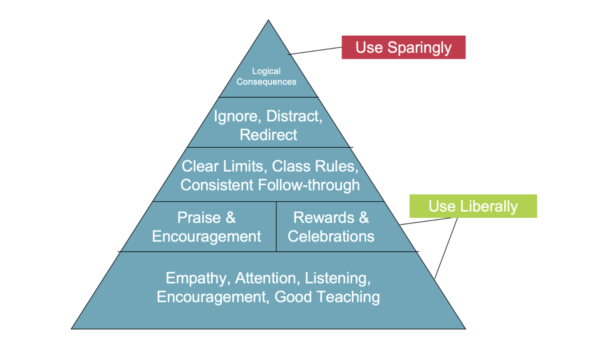Actionable Classroom Strategies for Reinforcing Appropriate Behavior
Students’ success in school is strongly influenced by positive social-emotional behavior (SEB) functioning. To promote positive academic outcomes, educators must be prepared to support students’ varying SEB needs and apply strategies that will help them demonstrate appropriate behavior and develop skills to thrive. Teaching behavior as relentlessly as we teach reading or other academic content is the ultimate act of prevention, promise, and power underlying PBIS and other preventive interventions in America’s schools (Algozzine et al., 2011). But how can this be done?
This article outlines actionable strategies that educators can use to reinforce appropriate behavior in the classroom.
Instructional Support Strategies for Bolstering Appropriate Behavior
Before diving into specific strategies, it’s important to emphasize that there is no replacement for strong curricula—consistency and quality are essential. This was especially evident after the abrupt transition to remote instruction at the start of the pandemic. In many cases, the curriculum that schools had in place wasn’t easily transitioned online—so educators had to improvise. Understandably, this departure from “business as usual” impacted students’ progress.

To re-engage and support students, educators can use the following strategies.
- Start from a foundation of positivity, empathy, and care
- Put effort toward building positive, strong relationships with students
- Even if it’s not at the “finish line,” acknowledge students’ ongoing progress
- Strive for enthusiastic, engaging teaching—make learning fun!
- Prioritize academic praise and corrective feedback
- Balance correction with praise for learning academic content at a ratio of 3:1 (Positive:Correction)
- Tailor feedback according to the level of the entire class—use a shaping procedure (e.g., successive approximations)
- Leverage multiple modes of communication (e.g., text/email) to share feedback
- Share students’ successes with parents
- Identify academic response opportunities
- Maximize opportunities for children to apply what they’re learning
- Use whiteboards, surveys, and peer-pairing
- Distribute opportunities across the whole class
- Use major concept summaries
- Summarize key points, skills, or concepts frequently
- Help children build a scaffold of important information
- Build upon prior concepts
- Look for gaps in completed work
- Set structure, rules, and routines
- Provide predictability through consistent structuring of activities and lessons
- Rules should be positively phrased and tailored to activity
- Routines should be predictable and help shape behavior over time
- Give attention and praise
- Instead of focusing solely on negative behavior, try to “catch students being good” during class
- Use positive reinforcement to acknowledge students using appropriate behavior
- Balance attention and praise across the class, rather than focusing on a few students
- Every student is unique—personalize feedback accordingly
- Utilize “effective request” best practices to encourage participation
- Obtain a student’s attention first, then issue the request
- Issue requests in manageable, clear steps
- Be specific
- Issue requests as a command or instruction, rather than as a suggestion
- To avoid confusion, limit requests to the present
- Follow requests with consequences for both compliance (e.g., praise) and noncompliance (e.g., repeating command)
- Leverage planned ignoring
- Deliberately ignore minor, inappropriate behaviors (especially if the behaviors are attention-seeking)
- Attend to the return to appropriate behavior
- Use differential attention by reinforcing positive behaviors and disregarding those that are negative
- Embed Premack contingencies and transitional warnings into lessons
- Provide an incentive for positive behavior with “Grandma’s Rule”
- Help students know about and prepare for transitions/changes in routine
Strategies for Encouraging Class-wide Appropriate Behavior
In addition to targeting individual student behaviors, educators can leverage strategies meant to address the behavior of an entire class.
Here’s a process to try in your classroom.
- Identify a class-wide appropriate behavior goal (note that individual or small group goals should not be addressed class-wide).
- Clearly define the goal in behavioral terms (e.g., attending to the lesson without interrupting the teacher; arriving after the bell to class).
- Anticipate positive or negative behaviors with antecedent control
- React to positive or negative behaviors with consequence control
- Clearly explain the procedures to the class
One example of implementing this behavior intervention process is through the Good Behavior Game. In this activity, educators split the class into two or more teams, and use a reward system to acknowledge appropriate behavioral goals met by the team.
Help Every Student Succeed: Prioritize SEB Functioning
With the right mix of instructional strategies and behavioral supports, educators can ensure every student has the skills they need to succeed in school and life.
To learn more, view the webinar: Actionable Strategies to Support Students’ Social-Emotional Behavior Skills.
*****
Illuminate Education equips educators to take a data-driven approach to serving the whole child. Our solution combines comprehensive assessment, MTSS management and collaboration, and real-time dashboard tools, and puts them in the hands of educators. As a result, educators can monitor learning and growth, identify academic and social-emotional behavioral needs, and align targeted supports in order to accelerate learning for each student.
Ready to discover your one-stop shop for your district’s educational needs? Let’s talk.

